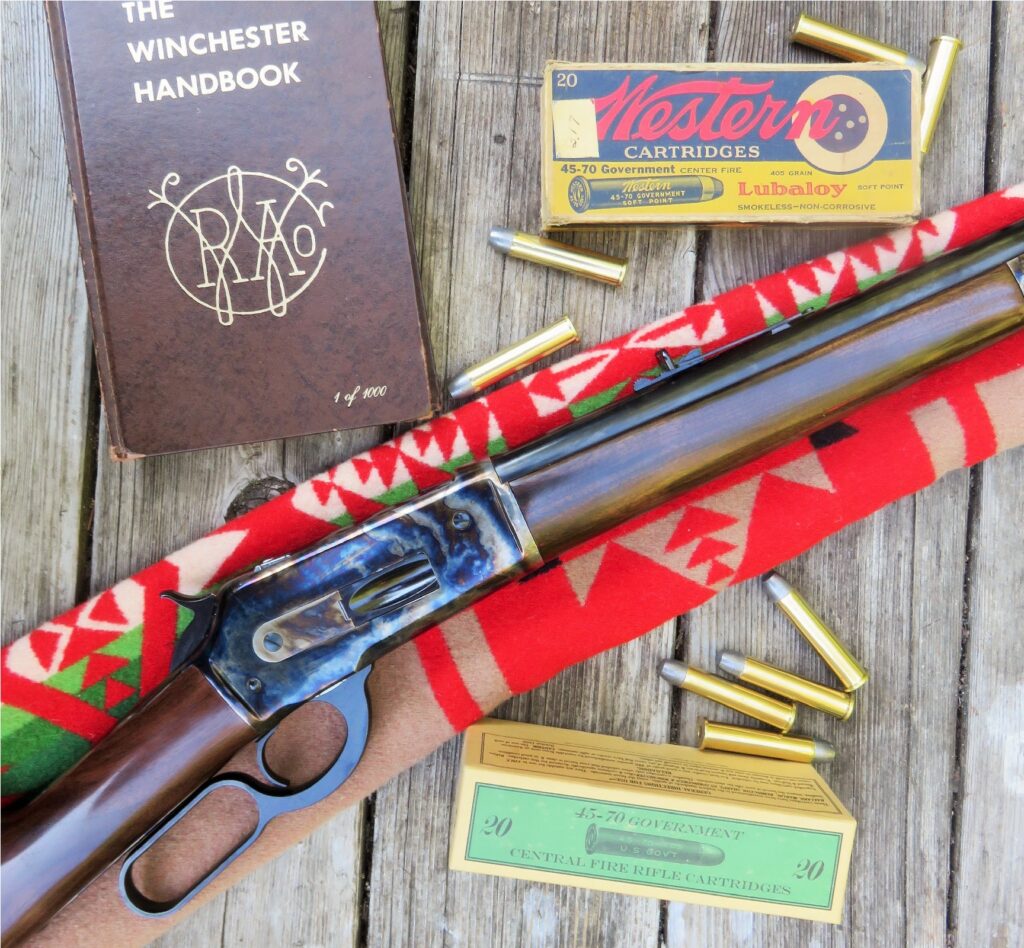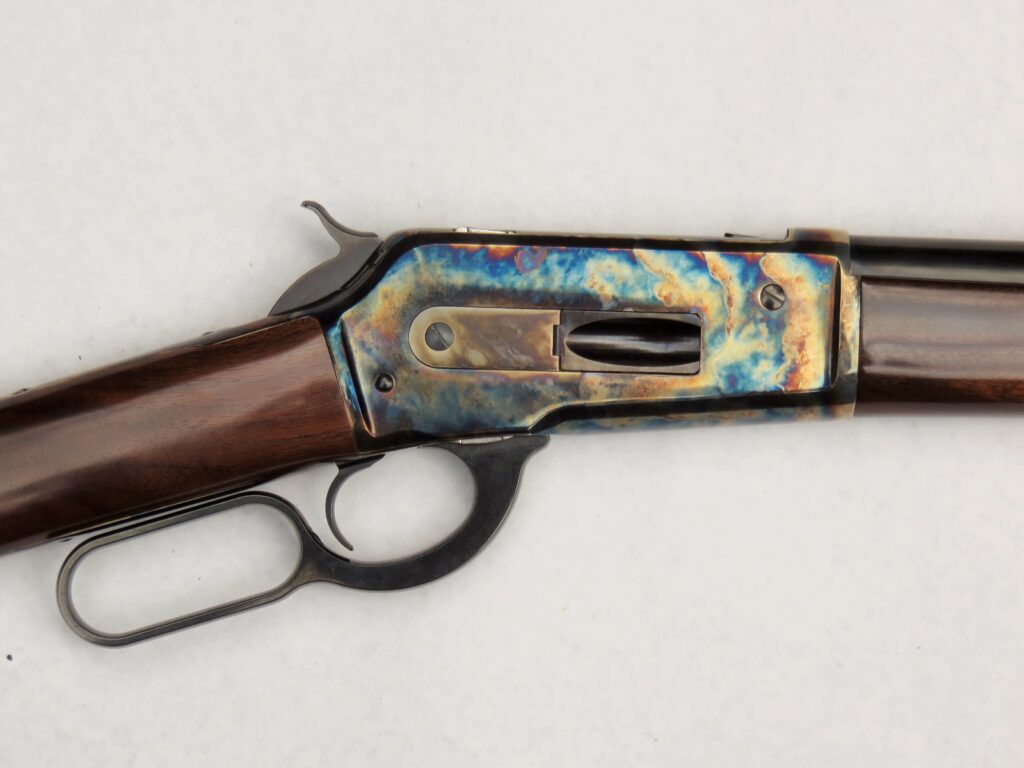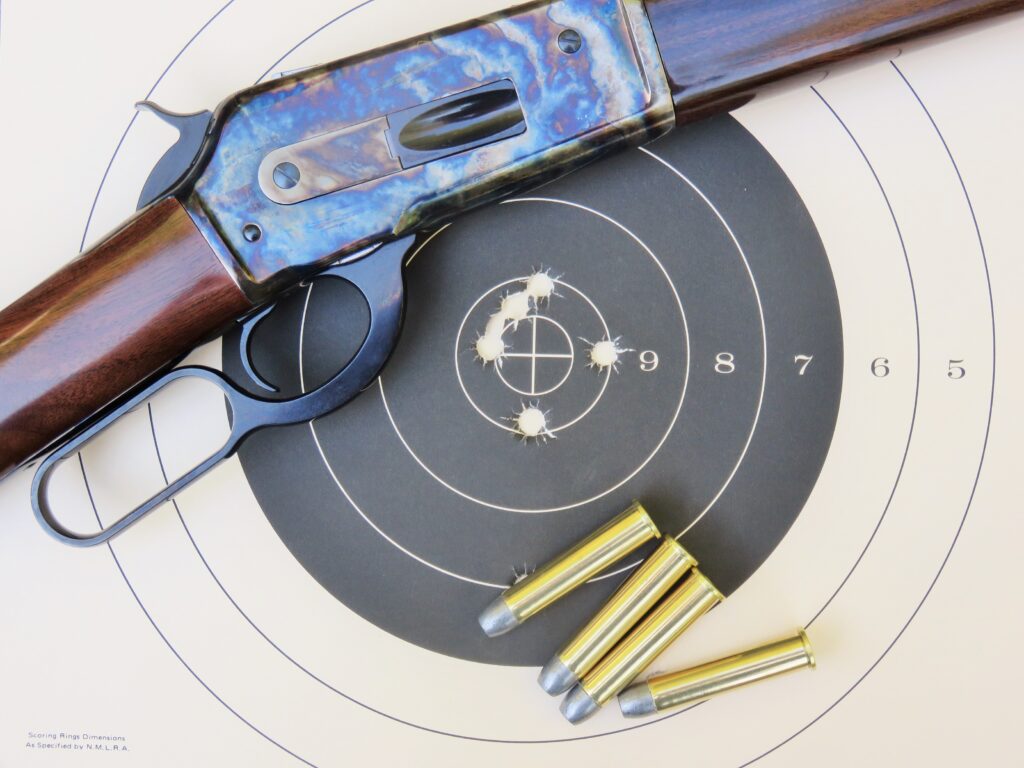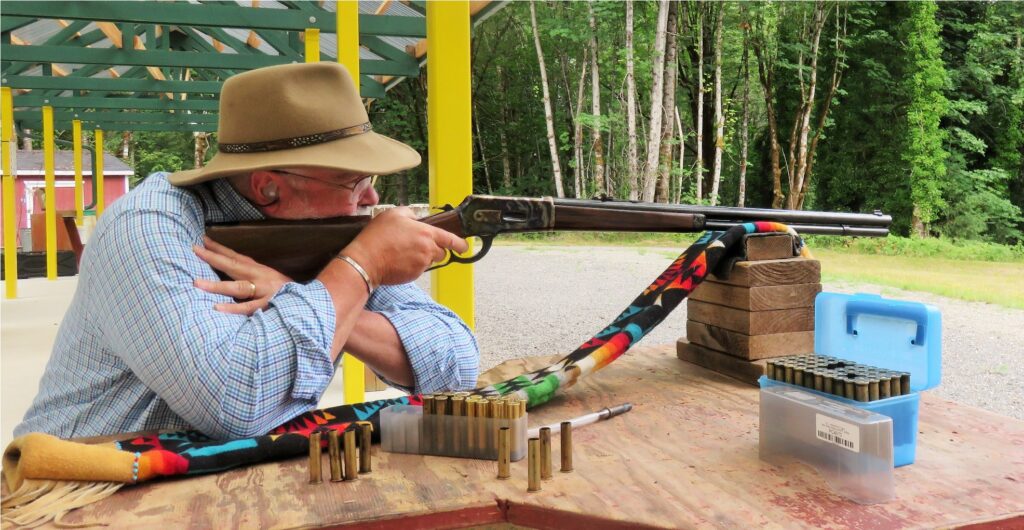
By Mike Nesbitt | Contributing Editor
Pedersoli is a company famous for reproductions of popular Old West classic firearms, and among these faithful rendition s is a copy of the old Winchester Model 1886, which they are calling the Model 1886 Sporting Classic.
This version represents the Winchester ’86 in its standard format, with no extra options, as it was when the original rifle first hit the market more than a century ago. The idea of no extra or added options is really appealing because a rifle like this is probably what might have bought back then by a hunter in those times. While Pedersoli has brought back the 1886 in its most standard version, this is still a copy of a rather rare rifle.

Of course, any old Winchester Model 1886 can be considered uncommon if not even rare. Over the almost 50-year span of production, just under 160,000 Model 1886 rifles were produced. That’s not counting the Model 71s in .348 Winchester; those rifles were fantastic but they’re not really ‘86s. And out of the total 160,000 rifles, only about 32,000 were made with round barrels. Even though the round barrels were standard, they were not as popular as the octagon barrels.
Another standard feature seen on this Pedersoli 1886 Sporting Classic is the color casehardened receiver. Color casehardening was standard on the original ‘86s up to about 1900, or near serial number 122,000. This Pedersoli version of the good ol’ ’86 has a nicely color casehardened receiver as well as the forearm’s nose cap and the butt plate.
Those standard and early features seem to underline the idea, at least for me, that this Model 1886 Sporting Classic by Pedersoli is a “black powder rifle.” That probably isn’t exactly what Pedersoli has in mind with this gun, so please accept my comment as simply the way I look at it. Of course, smokeless powder loads can be used in this new rifle, it just really has the flavor of a black powder lever gun.

Pedersoli describes this rifle as having an English style straight stock made of American walnut with a quality round 26” barrel cut with six grooves on a 1:18-inch twist. The barrel is fitted with open sights, a blade front sight and a buckhorn rear sight. The receiver is machined from forged steel and it is drilled and tapped on the left side for a peep sight. The tang is also drilled and tapped for the earlier style of tang sight. The magazine will hold eight cartridges.
The stock is certainly fancier than what Winchester used to put on a standard rifle, and there’s a lot of color in the buttstock. Even though we’d still call the wood on this rifle “straight grained,” it really catches the eye. Also, I found the buttstock to be straighter than the old Winchester’s by not having quite as much pitch or drop at the comb and the heel. There was no problem aiming the rifle, especially after the rear sight was raised to get the shots printing center on the target. The fit of the wood to the metal is excellent.
One part that Pedersoli did not copy was the long spring steel extractor that is plainly seen on top of the bolt on the old ’86 Winchesters. To replace that, Pedersoli is using a much shorter extractor that rides the front of the bolt. No problem there, it just looks different and the shorter extractor worked just fine.
The bullet finally settled on for use was Lyman’s #457193 and my mould for this bullet is marked “Lyman Centennial Edition” which reminds me that I’ve had it since 1978, when Lyman celebrated 100 years in the business. This bullet has a big flat nose and in the 1916 Winchester catalog a load with a similar bullet is shown and that load is labeled the “.45/70 Marlin.” So, a good batch of those bullets were cast using a 25-1 lead and tin alloy and one bullet was selected to be weighed. That slug balanced the scale at 424 grains. In general, Lyman’s #457193 is

regarded as a 420 grain bullet, perhaps my alloy is just a little softer…
For loading data, I quickly consulted Mike Venturino’s book “Shooting Buffalo Rifles of the Old West” and looked at what he tested this bullet with. Mike used five different powders for his testing with the 420 grain bullets, using 63 grains of powder with all of them. Let’s remember that Mike’s book came out 17 years ago and one thing he couldn’t do was test the load with Olde Eynsford powder. So, I quickly loaded just ten rounds using 63 ½ grains of Olde Eynsford 1 1/2F under #457193, with the bullets sized to .457” and lubed with BPC lube from C. Sharps Arms. An over-powder wad from John Walters with an .060” thickness completed the load and they were primed with Winchester standard large rifle primers.
Talking about that black powder load is “jumping the gun” by just a little bit because my first shots taken with the 1886 Sporting Classic were fired with smokeless loads by Precision Cartridge, Inc. Those loads fired a 405-grain lead bullet with Starline brass, listed at “Light” loads for Cowboy Action shooting. Shooting those in this ’86 was rather comfortable even though the PCI loads didn’t feel that light to me. One shot was fired over a chronograph just to see what they were doing and that load zipped across the screens at 1,269 feet per second, just about what 405-grain bullet should be doing out of a 26” barrel. That is not an average, just one shot was speed checked. Those smokeless loads were beneficial in checking the rifle’s sights and some adjustment was needed.
With the rear sight adjusted just a little for windage, I tried another target, posted at 50 yards, with the black powder loads. Two shots printed well for windage but they were low, so the rear sight was raised one step and then, wow! Allen Cunniff, who also did some fine shooting, was spotting my shots and my next shot was an X at 11:00 o’clock. I don’t remember the sequence of those shots now but the final group was a very delightful 50 with two possible Xs. All of that shooting was done on just one target so please excuse me for covering the two low holes with cartridges, which were shot before the sight was raised, when the picture of the rifle and target was taken.

The black powder loading was not checked for velocity. We can guess that the bullet’s speed was about 1,250 feet per second.
The old Winchester Model 1886 was probably the smoothest operation of the lever action rifles and Pedersoli’s version of it certainly follows in that tradition. This rifle was made available for testing and review by the Italian Firearms Group and they told me the suggested retail price for this, the 1886 Sporting Classic model, is $1995.00. The only thing I can add is that I like it, I like it quite a bit. And the only thing I would add to the rifle would be a Lyman #2 tang sight, that would ‘finish’ this rifle in grand style. For more information about this rifle and the other firearms they can offer, go to www.italianfirearmsgroup.com.



